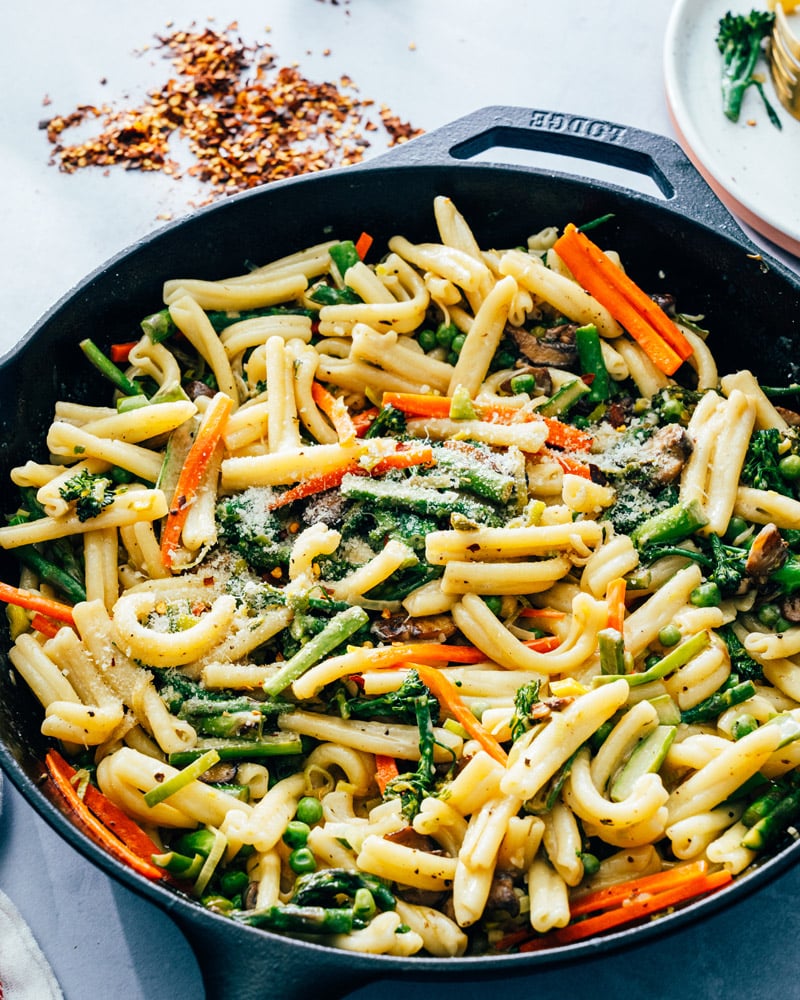
Pasta Primavera
Recipe courtesy of acouplecooks.com
Ingredients
- 8 ounces pasta (casarecce is shown)
- 2 tablespoons olive oil
- 4 ounces baby bella mushrooms, sliced
- 1 bunch (1 pound) asparagus, tough ends removed, sliced in half and cut into small pieces
- 1 leek, thinly sliced into half moons and washed (or 1 large shallot, thinly sliced)
- 1 bunch broccolini (or 1 crown broccoli), cut into small pieces
- 1 cup frozen peas, thawed under warm water
- 1 carrot, julienned
- 1 ½ teaspoon kosher salt, divided
- 1 ½ tablespoons salted butter
- 2 small garlic cloves, grated
- 2 tablespoons all purpose flour
- 1 ½ cups 2% milk
- ½ cup grated Parmesan cheese, plus more to garnish
Directions
- Bring a salted pot of water to a boil and cook the pasta to al dente (taste testing a minute or two before the package instructions indicate). Drain and toss the pasta with a bit of olive oil.
- Meanwhile, prep the vegetables as noted above. In a dutch oven or large skillet, heat the olive oil over medium high heat. Cook mushrooms for 4 minutes, until starting to brown. Add asparagus, leeks, broccolini, carrots and ½ teaspoon kosher salt and cook additional 4 to 5 minutes until asparagus is tender and bright green. Add peas and continue cooking until peas are bright green, about 1 minute.
- In a small or medium saucepan over medium heat, melt the butter. Add the grated garlic and cook 30 seconds until fragrant but not browned. Add the flour and whisk constantly for 1 minute to 90 seconds, until bubbly and golden. Add a splash of milk and whisk it in: the sauce will instantly turn chunky. Constantly whisking, continue to add splashes of milk and whisk them in until the entire quantity is incorporated and the sauce is smooth. Reduce the heat and whisk until the sauce thickens and no longer tastes like raw flour, about 5 minutes. Add ½ teaspoon kosher salt and the Parmesan cheese.
- Drain the pasta, then add it to the skillet with the veggies and stir in the sauce. Taste and add the additional ½ teaspoon kosher salt. Serve warm, garnished with additional Parmesan cheese. Leftovers store well refrigerated.

